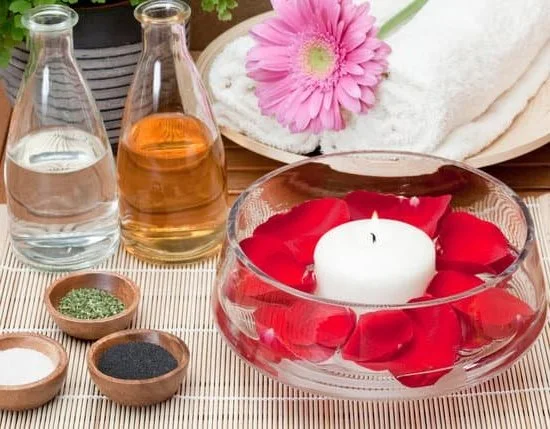Essential oils have gained significant popularity in the realm of alternative medicine and self-care practices. These highly concentrated aromatic compounds offer a host of potential benefits for physical, mental, and emotional well-being. However, it is crucial to understand that essential oils are potent substances that need to be diluted before use in order to ensure safety and efficacy.
In this article, we will delve into the importance of diluting essential oils for aromatherapy. We will explore what essential oils are and why they are commonly used in aromatherapy. Additionally, we will discuss the potential skin irritations and sensitization that can occur when essential oils are not properly diluted.
Understanding how to dilute essential oils is paramount for safe and effective use. We will provide you with guidelines on ratios and measurements, as well as information about different carrier oils that can be used for dilution purposes. Furthermore, we will walk you through a step-by-step guide on how to dilute essential oils at home so you can create your own personalized aromatherapy blends.
By embracing the power of diluted essential oils, you can enhance your aromatherapy experience while minimizing the risk of adverse reactions. Stay tuned as we explore popular essential oil combinations and recipes tailored for specific purposes in aromatherapy. We will also share tips and tricks on proper storage and handling techniques to maximize the shelf life of your diluted blends.
With answers to frequently asked questions and common mistakes addressed, we aim to clear up any misconceptions surrounding essential oil dilution for aromatherapy. So whether you’re a seasoned enthusiast or new to the world of aromatic therapies, this article will equip you with the knowledge needed to safely enjoy the benefits of diluted essential oils in your self-care routine.
What Are Essential Oils and Why Are They Used in Aromatherapy?
Essential oils are highly concentrated plant extracts that capture the natural aromatic compounds and therapeutic properties of various plants. These oils are used in aromatherapy, a form of alternative medicine that uses the inhalation or topical application of these oils to promote physical and psychological well-being.
Many different plants can be used to create essential oils, including lavender, peppermint, eucalyptus, tea tree, and chamomile. Each oil has its own unique composition and benefits, which is why different oils are used for different purposes in aromatherapy.
One of the main reasons essential oils are used in aromatherapy is for their pleasant scent. The aromatic compounds in these oils can have a powerful effect on our mood and emotions. For example, lavender oil is often used for its calming and relaxing properties, while citrus oils like lemon or orange can be energizing and uplifting.
In addition to their aroma, essential oils also have therapeutic properties that can benefit the body and mind. They can be antibacterial, antifungal, anti-inflammatory, analgesic (pain-relieving), or even support immune function. This is why they are commonly used to address various health concerns such as stress management, respiratory issues, headaches, muscle pain, skin conditions, and more.
It is important to note that while essential oils can provide many benefits when used correctly and safely, they should always be diluted before use. This is because undiluted essential oils are highly concentrated and can cause skin irritation or sensitization when applied directly to the skin. Diluting them with a carrier oil helps to reduce their potency without compromising their therapeutic effects.
The Importance of Dilution
Essential oils are highly concentrated plant extracts that are commonly used in aromatherapy for their therapeutic benefits. While these oils can offer a range of health benefits, it is crucial to dilute them properly before using them on the skin. This section will highlight the importance of dilution in order to avoid skin irritation and sensitization.
One of the main reasons why dilution is necessary is because essential oils are extremely potent and concentrated. Direct application of undiluted essential oils onto the skin can lead to skin irritation, redness, and even chemical burns. Some essential oils, such as citrus oils like lemon or lime, are particularly phototoxic and can cause severe sunburns or skin damage when not diluted correctly.
Furthermore, repeated and prolonged exposure to undiluted essential oils can result in sensitization. Sensitization refers to an allergic reaction where the body becomes hypersensitive to certain substances. Once sensitized, even small amounts of the offending substance can lead to severe reactions. Proper dilution helps reduce the risk of sensitization by minimizing direct exposure to concentrated essential oil compounds.
To ensure safe use, it is important to follow essential oil dilution guidelines. The most common method involves combining a few drops of essential oil with a carrier oil like sweet almond, jojoba, or coconut oil.
The proper ratio for diluting essential oils can vary based on factors such as the individual’s age, health condition, and the specific purpose of use. Generally, a safe starting point is 2-5% concentration for adults and 1% or less for children and those with sensitive skin.
| Age Group | Elderly/Adults | Children (2 years+) | Infants/Toddlers (6 months+) |
|---|---|---|---|
| Essential Oil Concentration (in ml) | 10 | 5 | 2.5 |
| Carrier Oil Concentration (in ml) | 190 | 195 | 197.5 |
By diluting essential oils properly, individuals can enjoy the benefits of aromatherapy without the risk of skin irritation or sensitization. Remember to always patch test a diluted essential oil mixture on a small area of skin before applying it more widely. This will help determine if any adverse reactions occur and whether further dilution may be necessary.
Essential Oil Dilution Guidelines
Diluting essential oils is crucial for ensuring safe and effective use in aromatherapy. Without proper dilution, essential oils can cause skin irritation and sensitization. Understanding the ratios and measurements for dilution is essential to ensure that you are using essential oils safely.
When it comes to diluting essential oils, there are general guidelines that can help you determine the appropriate ratio. The most common ratio used is a 2% dilution, which means adding 12 drops of essential oil to every ounce (30 ml) of carrier oil. This is considered a safe and effective starting point for most adults. However, some individuals may require a lower dilution, especially those with sensitive skin or children.
Another commonly used ratio is a 1% dilution, which means adding 6 drops of essential oil to every ounce of carrier oil. This ratio is often recommended for children, the elderly, and individuals with sensitive skin. It’s important to remember that these ratios can be adjusted based on individual needs and preferences.
To accurately measure the number of drops needed for dilution, it’s recommended to use a dropper or pipette. This ensures precision and avoids wasting any essential oil. Keep in mind that different oils have different viscosities, so drop sizes may vary slightly.
Overall, understanding the ratios and measurements for diluting essential oils is key to ensure their safe use in aromatherapy. Always start with a lower dilution level and adjust as needed based on your specific situation. By following these guidelines, you can enjoy all the benefits of aromatherapy while minimizing the risk of skin irritation or sensitization.
Choosing the Right Carrier Oils for Dilution
When it comes to diluting essential oils for aromatherapy, choosing the right carrier oil is just as important as understanding the ratios and measurements. Carrier oils are neutral, vegetable-based oils that are used to dilute essential oils before applying them to the skin. Not only do they help prevent skin irritation and sensitization, but they also provide additional benefits of their own.
Popular Carrier Oil Options
There are a wide variety of carrier oil options available, each with its own unique properties and benefits. Some popular choices include:
- Sweet Almond Oil: This light and absorbent carrier oil is rich in vitamins A, B, and E, making it a great option for moisturizing and nourishing the skin. It has a mild scent that complements most essential oils.
- Jojoba Oil: Similar in composition to our skin’s natural sebum, jojoba oil is easily absorbed without leaving a greasy residue. It is known for its balancing effect on both dry and oily skin.
- Coconut Oil: With its antimicrobial properties, coconut oil is not only an excellent moisturizer but can also help protect the skin from bacterial or fungal infections. However, keep in mind that coconut oil solidifies at cooler temperatures, so it may need to be warmed before use.
- Grapeseed Oil: This light and odorless carrier oil is high in antioxidants and vitamin E, making it ideal for sensitive or acne-prone skin. It absorbs quickly without clogging pores.
Considerations when Choosing a Carrier Oil
When selecting a carrier oil for dilution, there are a few factors to consider:
- Skin Type: Different carrier oils work better for different skin types. Consider whether you have dry, oily, sensitive, or combination skin when choosing a carrier oil.
- Scent: Some carrier oils have their own distinct scent, which may affect the overall aroma of the essential oil blend. If you prefer a more subtle aroma, opt for carrier oils with a mild scent or no scent at all.
- Shelf Life: Carrier oils have varying shelf lives, so it is important to consider how long you plan to keep your diluted essential oil blend. Some carrier oils have longer shelf lives than others, and some may require refrigeration to extend their lifespan.
By selecting the right carrier oil for dilution, you can enhance the benefits of essential oils while ensuring a safe and enjoyable aromatherapy experience. Experiment with different carrier oils to find the ones that work best for your skin type and personal preferences.
Step-by-Step Guide
Gather Your Supplies
Before you begin the process of diluting essential oils for aromatherapy at home, it’s important to gather all the necessary supplies. This will ensure that you have everything you need in one place and make the dilution process more efficient. Here are some supplies you will need:
- Essential oils: Choose high-quality, pure essential oils that are suitable for aromatherapy use. Make sure to read the labels and select oils that are safe for skin application.
- Carrier oil: Select a carrier oil that is appropriate for your intended use and skin type. Common carrier oils include jojoba oil, sweet almond oil, coconut oil, and grapeseed oil.
- Measuring tools: You will need measuring tools such as droppers, pipettes, or graduated cylinders to accurately measure both the essential oils and carrier oils.
- Amber glass bottles: It is recommended to store diluted essential oils in dark-colored glass bottles to protect them from light degradation.
- Labels: Don’t forget to label your bottles with the name of the essential oil and its dilution ratio for easy identification later on.
Calculate Dilution Ratios
The next step in diluting essential oils for aromatherapy is calculating the appropriate dilution ratios. These ratios determine how much essential oil should be mixed with a carrier oil based on factors such as age, health conditions, and intended use.
For adults, a general guideline is to use a 2% dilution ratio, which means adding 12 drops of essential oil per ounce (30 ml) of carrier oil. However, this ratio can be further adjusted based on individual preference or specific needs.
For children over two years old and individuals with sensitive skin or certain health conditions, it is advisable to use lower dilution ratios ranging from 0.25% to 1%. This translates to approximately 1-5 drops of essential oil per ounce (30 ml) of carrier oil.
Blend the Essential Oils with Carrier Oil
Now that you have calculated the dilution ratio, it’s time to blend your essential oils with the carrier oil. Follow these steps to ensure a proper dilution:
- Start by measuring the desired amount of carrier oil using your chosen measuring tool and pouring it into an amber glass bottle.
- Next, add the calculated number of drops of essential oil into the bottle. Remember to drop them directly into the carrier oil and not onto the sides of the bottle.
- Close the bottle tightly and shake it gently for about 10-20 seconds to thoroughly mix the essential oils and carrier oil together.
- Label your blended mixture with the essential oil names, dilution ratio, and date of preparation to keep track of its contents.
Congratulations. You have successfully diluted your essential oils for aromatherapy at home. Remember to store your diluted oils in a cool, dry place away from direct sunlight to maximize their shelf life.
Popular Essential Oil Combinations and Recipes for Specific Aromatherapy Purposes
Essential oils are not only known for their pleasing scents, but they also possess various therapeutic properties that can benefit our physical and emotional well-being. When it comes to aromatherapy, combining different essential oils can create unique blends that serve specific purposes.
One popular combination is lavender and peppermint essential oil. This blend is perfect for promoting relaxation and relieving tension. Lavender is well-known for its calming effects, while peppermint provides a cooling sensation that can ease headaches and muscle pain. Simply add a few drops of each oil to your diffuser or dilute them in a carrier oil before applying them topically.
For those looking to boost their energy levels and improve focus, a blend of rosemary and lemon essential oil is highly recommended. Rosemary has been found to stimulate the mind and enhance cognitive function, while lemon oil has an invigorating citrus scent that promotes alertness. These oils can be used in a diffuser or incorporated into homemade cleaning products for an uplifting environment.
If you’re seeking relief from respiratory issues such as congestion or allergies, eucalyptus and tea tree essential oil make a powerful combination. Both oils have antimicrobial properties that help to clear the airways and alleviate respiratory discomfort. You can diffuse these oils together or mix a few drops with a carrier oil and apply the blend to your chest or throat area for targeted relief.
It’s important to note that everyone’s preferences and needs may vary when it comes to essential oil combinations. Experimenting with different blends will allow you to discover what works best for you. However, always remember to follow proper dilution guidelines and consult with a qualified aromatherapist if you have any concerns or underlying health conditions.
Tips and Tricks for Proper Storage and Handling
Proper storage and handling of diluted essential oils plays a crucial role in maximizing their shelf life and preserving their therapeutic properties. When essential oils are not stored correctly, they can deteriorate, lose their effectiveness, and even become harmful. Here are some tips and tricks to ensure that your diluted essential oils remain potent and safe for use:
- Choose the right containers: It is important to store diluted essential oils in dark-colored glass bottles, preferably amber or cobalt blue. These glass bottles protect the oils from sunlight and UV rays, which can cause them to degrade quickly.
- Keep them cool: Essential oils should be stored in a cool environment away from heat sources. Exposure to heat can accelerate oxidation and evaporation of the oil, leading to a decrease in its potency.
- Avoid exposure to air: Oxygen exposure can cause essential oils to oxidize and lose their therapeutic benefits. Make sure that the containers are tightly sealed after each use to minimize air contact.
- Label your bottles: Always label your diluted essential oil bottles with the name of the oil and its dilution ratio. This not only helps you keep track of your blends but also ensures that you grab the right oil when needed.
- Store them out of reach: Keep your diluted essential oils out of reach of children and pets to prevent accidental ingestion or spills.
- Use clean tools: When handling diluted essential oils, it is important to avoid contamination by using clean utensils such as droppers, pipettes, or spoons. Avoid using fingers directly into the bottle as this can introduce bacteria or other contaminants.
By following these storage tips and tricks, you can extend the shelf life of your diluted essential oils while maintaining their potency and aromatherapy benefits for a longer period. Remember to always consult reliable sources or professional aromatherapists for specific guidelines on storing certain types of essential oils that may have unique requirements.
FAQs and Common Mistakes
As with any topic, there are often questions and misconceptions surrounding essential oil dilution for aromatherapy. In this section, we will address some frequently asked questions and common mistakes to provide clarity and ensure a safe and effective aromatherapy experience.
One common question is, “Do I always need to dilute essential oils before use?” The answer is yes, with very few exceptions. Essential oils are highly concentrated plant extracts that can be too strong to use directly on the skin.
Diluting them in a carrier oil helps to reduce the risk of skin irritation or sensitization. However, there are a few essential oils, such as lavender and tea tree oil, that can be safely used undiluted in small amounts for spot treatments.
Another question many people have is about the appropriate dilution ratio. It’s important to follow guidelines to ensure safe use. For general use on the body, a 2% dilution is commonly recommended, which means adding 12 drops of essential oil per ounce of carrier oil.
For children, elderly individuals, or those with sensitive skin, a lower dilution of 1% (6 drops per ounce) is often advised. It’s crucial to remember that using higher concentrations does not necessarily enhance the benefits of essential oils but can increase the risk of adverse reactions.
One mistake that is often made when diluting essential oils is using inappropriate carrier oils or bases. Not all carrier oils are suitable for every individual or type of aromatherapy application. It’s important to consider factors such as skin type, personal preferences, absorption rate, and potential allergies when choosing a carrier oil.
Some popular options include jojoba oil (suitable for all skin types), almond oil (great for moisturizing), coconut oil (solid at room temperature), and grapeseed oil (lightweight and non-greasy). Always perform a patch test before applying a diluted essential oil blend to a larger area of the body to check for any adverse reactions.
By addressing these FAQs and common mistakes, individuals can have a better understanding of essential oil dilution for aromatherapy. Remember to always consult credible sources, such as certified aromatherapists or reputable books on the subject, to ensure accurate information. With proper knowledge and care, you can confidently embrace the power of diluted essential oils for safe, effective, and enjoyable aromatherapy experiences.
Conclusion
In conclusion, diluting essential oils is a crucial step in ensuring a safe, effective, and enjoyable aromatherapy experience. By understanding the importance of dilution, you can avoid skin irritation and sensitization that can occur from using undiluted essential oils. The dilution guidelines provided in this article offer an easy-to-follow framework for determining the appropriate ratios and measurements when combining essential oils with carrier oils.
Choosing the right carrier oils is also key to successful dilution. Each carrier oil has its own unique benefits and properties that can enhance the therapeutic effects of essential oils. Whether you prefer jojoba oil for its moisturizing properties or almond oil for its soothing qualities, there are various options available to suit your specific needs.
With the step-by-step guide provided, you can confidently and easily dilute essential oils at home. Experimenting with popular essential oil combinations and recipes will allow you to discover your favorite aromatherapy blends for specific purposes, such as relaxation or mood enhancement.
Lastly, proper storage and handling of diluted essential oils are necessary to maximize their shelf life. By storing them in dark glass bottles, keeping them away from heat and direct sunlight, and sealing them tightly after each use, you can ensure that your diluted essential oils remain fresh and potent for longer periods.
By embracing the power of diluted essential oils, you can unlock the full potential of aromatherapy while prioritizing safety and effectiveness. Remember to always consult reputable sources for guidance on specific essential oil properties, potential interactions, and precautions before incorporating them into your daily routine. With proper knowledge and care, using diluted essential oils can provide a holistic approach to well-being that enhances both physical health and emotional balance.
Frequently Asked Questions
How do you mix essential oils for aromatherapy?
Mixing essential oils for aromatherapy involves combining different essential oils to create a desired scent or therapeutic effect. It is important to consider the individual properties and benefits of each oil, as well as their compatibility with each other. To begin, start by selecting a carrier oil such as sweet almond, jojoba, or coconut oil. Next, choose the essential oils you want to blend and determine the desired strength of the scent.
Typically, 5-10 drops of essential oil per ounce of carrier oil is a good starting point. However, you can adjust this based on personal preference and the specific oils being used. Remember to thoroughly mix the oils together before using them for aromatherapy purposes.
How do you dilute aromatherapy oil?
Diluting aromatherapy oil is necessary to ensure safe usage and prevent skin irritation or adverse reactions. Essential oils are highly concentrated and can be too strong when used undiluted directly on the skin. To dilute an aromatherapy oil, start by selecting a suitable carrier oil such as sweet almond, jojoba, or grapeseed oil.
Then, determine the ratio that works for your needs – typically 2-3% dilution is recommended for everyday use. This means adding about 12-18 drops of essential oil per ounce of carrier oil. The amount may need adjusting based on factors such as sensitivity and age, so it’s always best to start with less and gradually increase if needed.
What is the ratio for diluting essential oils?
The ratio for diluting essential oils is typically expressed as a percentage and can vary depending on the purpose or application method. In general, a safe and commonly recommended dilution ratio is about 2-3% for adults in most cases of regular use. This means adding approximately 12-18 drops of essential oil per ounce of carrier oil or another suitable base substance like lotion or bath salts.
For children, elderly individuals, pregnant women, or those with sensitive skin, it is advisable to use a lower dilution ratio, usually around 1%. However, it’s important to note that some essential oils require even greater dilution or should be used sparingly due to their potency or potential side effects. When in doubt, it is best to consult a qualified aromatherapist or refer to reliable resources for specific recommendations on diluting different essential oils.

Are you looking for a natural way to improve your health and wellbeing?
If so, aromatherapy may be the answer for you.





